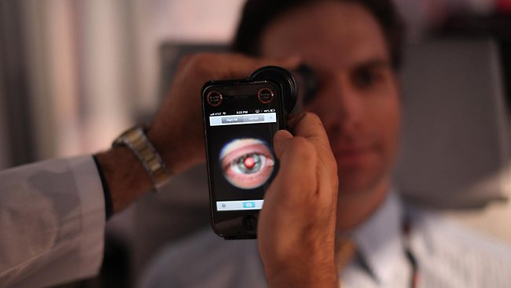
Healthcare in the Digital Age, with John Patrick
| Whatever a provider did was reimbursed, whether the services provided were needed or not, or even if the service included medical errors. All of that is now changing at an accelerating pace. | |
| |
 | The Internet and mobile technology have been disrupting almost every industry for years now. Why has the healthcare industry been slower to change? |
 | The short answer is the healthcare industry has not changed quickly because it did not have to. It has historically been a reimbursement-oriented industry. Whatever a provider did was reimbursed, whether the services provided were needed or not, or even if the service included medical errors. All of that is now changing at an accelerating pace. |
 | Why are healthcare costs so high in the U.S.? |
 | There is a long list of contributors to the high cost of American healthcare, which is 50-100% more costly per person than in other developed countries. The #1 reason for our high cost is the high number of unnecessary tests and procedures. This is driven in part by the reimbursement incentive: the more I do, the more I get paid. It is also driven by fear of litigation. The actual cost due to lack of tort reform is not huge, but the cost of unnecessary tests and procedures ranges between $500 billion and $1.5 trillion per year.
Other contributors to the high cost of American healthcare are fraud, inefficiency, lack of the best quality of care, the free reign of the pharmaceutical industry to raise prices, and the carpet bombing TV ads which drive demand for high cost treatments that in reality are often no better than inexpensive treatments. |
| The FDA has now approved more than 200 medical devices and apps for smartphones. | |
| |
 | Could you give us a few examples of how these costs could be lowered through the implementation of existing technology? |
 | In combination with changes to the reimbursement method and a reduction in unnecessary tests and procedures, consumers can have a direct impact on healthcare cost by adoption of mobile health technology, or mHealth. With mHealth devices, consumers can monitor and track their health. Simply put, people who track their health will be healthier.
A great deal of cost is driven by chronically ill patients who travel back and forth to physicians for checkups. Some of these are necessary, but many are not. mHealth devices can enable patients to monitor many aspects of their health on their own. The FDA has now approved more than 200 medical devices and apps for smartphones. |
 | When it comes to incorporating such technology, is the U.S. trailing behind other developed nations? |
 | Generally speaking, other developed countries have adopted information technology - such as electronic health records - more rapidly than the U.S. |
 | How is the attitude of patients and the healthcare industry getting in the way of affordable healthcare? |
 | Attitude is the largest factor affecting American healthcare. It applies the four P’s.
2. Providers will change their attitudes as a result of the shift to accountable care, which is described in the next question. 3. Payers need to adopt standards so administrative costs can be reduced. The lack of administrative standards adds hundreds of billions of dollars to healthcare cost. 4. Policymakers need to lead the effort toward standards. They don’t need to set the standards but they need to apply pressure to payers and information technology companies to adopt standards. Electronic health records should work more like the Internet. The Internet works the same everywhere in the world. EHRs on the other hand do not even work the same in different departments of the same hospital. |
| Under the ACO model, providers are paid a fixed amount per month for each consumer under an ACO contract. This provides an incentive for providers to eliminate unnecessary tests and procedures. | |
| |
 | What can be done to change these attitudes? |
 | The biggest change is the accountable care organization (ACO). Under the ACO model, providers are paid a fixed amount per month for each consumer under an ACO contract. This provides an incentive for providers to eliminate unnecessary tests and procedures. ACOs are in operation and some are producing savings. The ACO model needs refinement, but it has proved it can work and it should be expanded. |
 | What steps can healthcare organizations take to help their staff and consumers adjust to using new patient-centered technologies? |
 | Lower cost and higher quality healthcare is all about leadership. Hospital and physician network CEOs must make quality a constant theme. Higher quality leads to lower cost and, with the shift to ACOs, providers have an opportunity to make American healthcare dramatically better. Leaders need to reward those who contribute to the changes and counsel those who do not. |
 | One recommendation you have is storing patient data in the cloud. What steps can be taken to ensure that patients’ private information remains private and secure? |
 | Cloud computing is the new normal. Healthcare providers should not be wasting resources managing computer servers. Their focus should be healthcare. For those who choose to operate their own cloud services, they must apply the very best in security technology. Amazon, eBay, Google, and many others have shown it is possible to operate cloud services securely. If no corners are cut, it can be done. |
| Unfortunately, the probability of banning pharmaceutical advertising is about the same as Congress taking action on gun control. | |
| |
 | What is the probability that the government will ban pharmaceutical advertising and what effects would a ban have on prescription drug prices? |
 | Unfortunately, the probability of banning pharmaceutical advertising is about the same as Congress taking action on gun control. The pharmaceutical industry has 1,500 lobbyists and spends hundreds of millions of dollars per year in lobbying and political contributions. The Congress listens to them much more than they listen to the people. These ads do not improve health, but they do increase healthcare cost. |
 | How will the rise of robot technology change healthcare in the coming years? |
 | Robots will play an increasingly large role in our lives. Just as tens of thousands of robots are already picking and packing orders at Amazon shipping facilities around the world, robots will be in thousands of homes helping with the care of chronically ill patients.
Robots do not get bored with trivial tasks. Furthermore, their cost is declining while their capabilities are increasing. As more advanced models are developed, they will look and act like humans more and more. To bring John Patrick to your organization, please contact Michael Frick at: Mike@Speaking.com |















